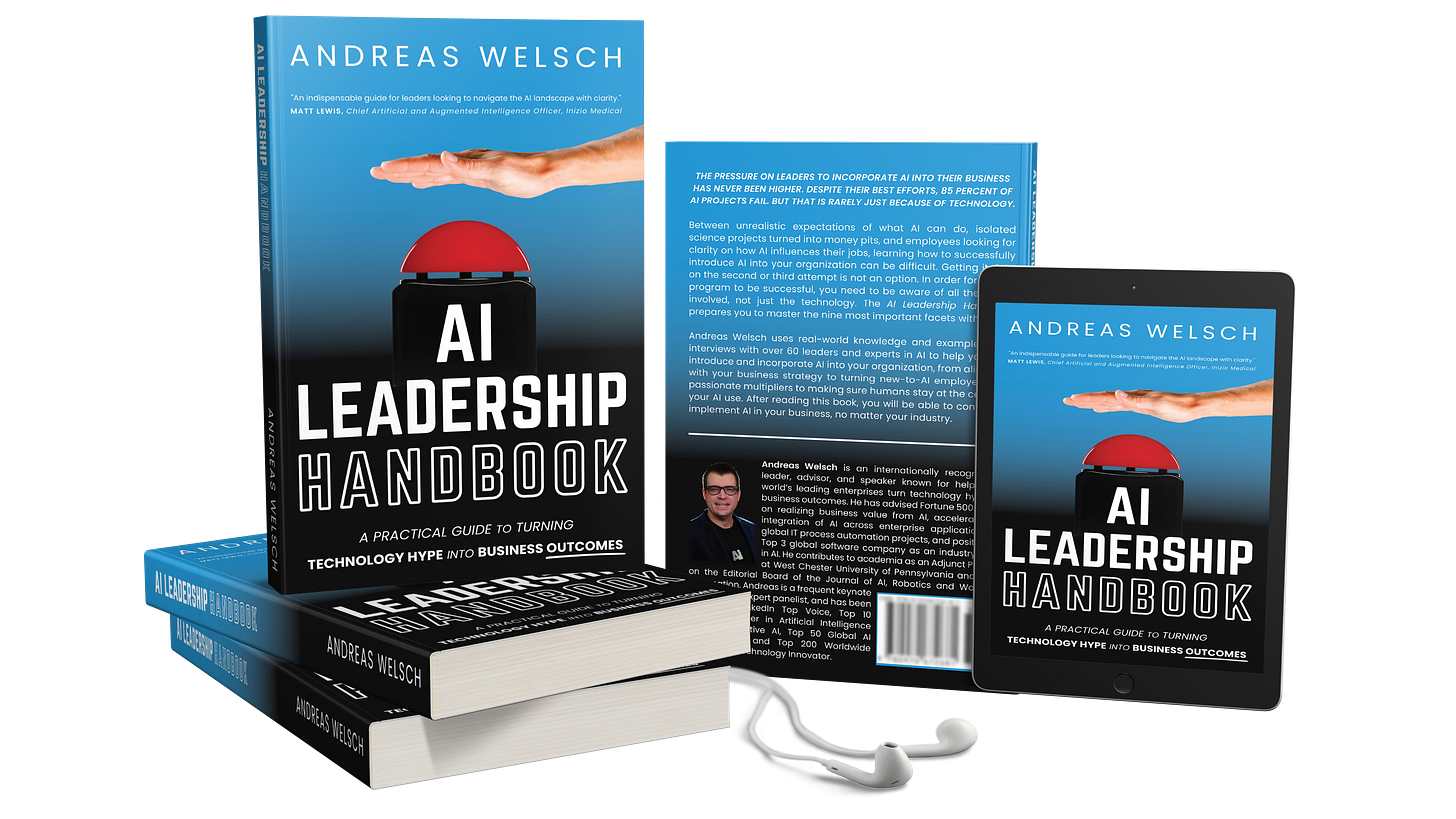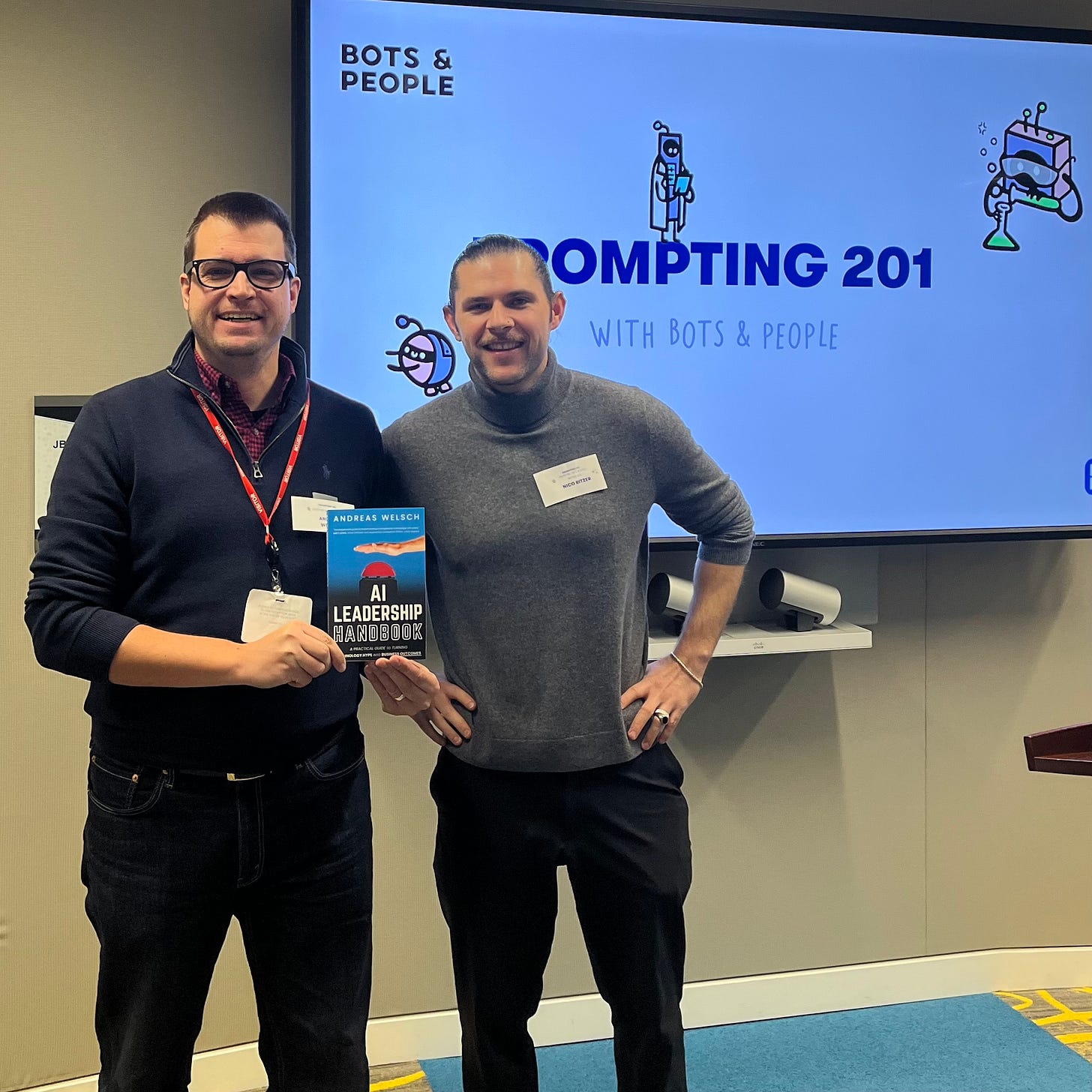AI Literacy: Unlocking Measurable Value From AI with Cohort-Based Learning
Boost Engagement, Skills, and Impact with Social Blended Learning for AI Training
Nico Bitzer (CEO & Co-Founder of Bots & People) joined me on “What’s the BUZZ?” and shared how you can increase AI literacy in your organization and design impactful upskilling initiatives. Leaders are investing in AI tools with high hopes of transforming productivity, but the reality often requires more than just adopting the technology.
Employees need the right training to unlock AI’s potential. Effective upskilling follows a clear purpose, fosters social blended learning, and demonstrates impact through measurable outcomes. So, where should you start? Here is what we’ve talked about…
Defining the Purpose Behind AI Upskilling
Before launching any training initiative, it’s essential to communicate why it matters. Employees, like anyone else, are more likely to engage when they understand the purpose and how it connects to their work. Leaders must anchor their messaging in relatable benefits, whether it’s saving time, improving work-life balance, or aligning with the company’s mission.
In many organizations, AI upskilling has been successfully linked to improving efficiency and enabling employees to focus on more meaningful tasks. For example, in one company, a clear narrative around using AI to eliminate mundane tasks and enhance creativity drove significant engagement. Employees realized that AI wasn’t just about productivity—it was a way to make their work more fulfilling.
For leaders, this means crafting a story that resonates at all levels of the organization. Senior leaders might be drawn to AI’s strategic value, while frontline employees might care more about day-to-day time savings. The messaging should be clear, personalized, and consistent, forming the foundation of a successful training rollout.
Listen to the Audiobook: AI Leadership Handbook
Andreas Welsch uses real-world knowledge and examples from interviews with over 60 leaders and experts in AI to help you both introduce and incorporate AI into your organization, from aligning it with your business strategy to turning new-to-AI employees into passionate multipliers to making sure humans stay at the center of your AI use. After listening to this audiobook, you will be able to confidently implement AI in your business, no matter your industry.
Making Learning Social and Blended
Traditional training models often focus on delivering information rather than fostering engagement. Social blended learning flips that model, blending microlearning, live sessions, and group work into a cohesive experience. This method encourages employees to learn by doing, apply knowledge to real-world tasks, and collaborate with peers.
One standout example of this approach is a telecommunications company that trained 5,000 employees on basic AI prompting skills through interactive "Promptathon" workshops. These sessions combined group activities and practical exercises, enabling participants to see immediate results. Employees reported saving an average of two hours per week as a direct result of the training—a powerful testament to the value of interactive, hands-on learning.
» You need to have some set of tools that are vetted and approved by the enterprise that your citizens can work in. Because the last thing you want is chaos where everybody finds their ends. «
— Nico Bitzer
Social blended learning also ensures that training doesn’t feel like a box-ticking exercise. By involving employees in meaningful, applied learning experiences, organizations can build a stronger sense of ownership and enthusiasm for AI tools. It’s not just about teaching people to use AI—it’s about helping them feel confident and empowered to integrate it into their work.
Measuring the Impact and Building the Business Case
One of the most common challenges in training programs is demonstrating their value. AI training is no exception. Leaders need to measure its impact to justify the investment and refine and scale their efforts. This requires going beyond traditional metrics like attendance or completion rates to focus on tangible outcomes.
Organizations that succeed in this area often use surveys, time-tracking studies, and feedback loops to assess the effectiveness of their training programs. For instance, participants in the "Promptathon" workshops provided measurable insights into how much time they saved weekly by applying their new skills. These results became a compelling business case for expanding the training initiative to other departments and regions.
Measuring impact also reinforces the value of training for employees. When participants see how their efforts translate into real benefits—whether it’s time savings, increased efficiency, or improved job satisfaction—they’re more likely to continue engaging with future learning opportunities. For leaders, this is a chance to connect the dots between training and broader organizational goals, creating a win-win scenario for everyone involved.
Summary
To make the most of AI tools, organizations need more than licenses—they need a workforce equipped to use them effectively. By defining a clear purpose, embracing social blended learning, and measuring impact, leaders can build successful upskilling programs that drive real results. These strategies not only empower employees but also ensure that organizations remain competitive in an increasingly AI-driven world.
Now that you’ve explored these approaches, consider how they can be tailored to your own organization. Whether you’re planning your first AI training session or looking to scale existing efforts, start by aligning your goals, engaging your teams, and tracking progress. The journey to AI literacy is ongoing, but with the right foundation, it’s one that delivers lasting value.
Empower your employees with AI skills that drive results—reach out to build your training roadmap.
Listen to this episode on the podcast: Apple Podcasts | Other platforms
Explore related articles
Become an AI Leader
Join my bi-weekly live stream and podcast for leaders and hands-on practitioners. Each episode features a different guest who shares their AI journey and actionable insights. Learn from your peers how you can lead artificial intelligence, generative AI, agentic AI, and automation in business with confidence.
Join us live
February 04 - Kate O’Neill (Tech Humanist) will talk about designing a human-centric AI workplace.
February 11 - Joe Reis (Founder of Nerd Herd) will be on the show when we talk about balancing your passion for AI against the risk of burning out.
February 18 - Eduardo Ordax (Generative AI Lead at AWS) will join and share how you can build your first AI agents.
March 11 - Dan Sodergren (Future of Work Expert) will join and share how AI agents are reshaping our work forever.
March 18 - Tomas Gogar (CEO & Co-Founder of Rossum) will be on the show. [More details to follow…]
Watch the latest episodes or listen to the podcast
Follow me on LinkedIn for daily posts about how you can lead AI in business with confidence. Activate notifications (🔔) and never miss an update.
Together, let’s turn hype into outcome. 👍🏻
—Andreas










